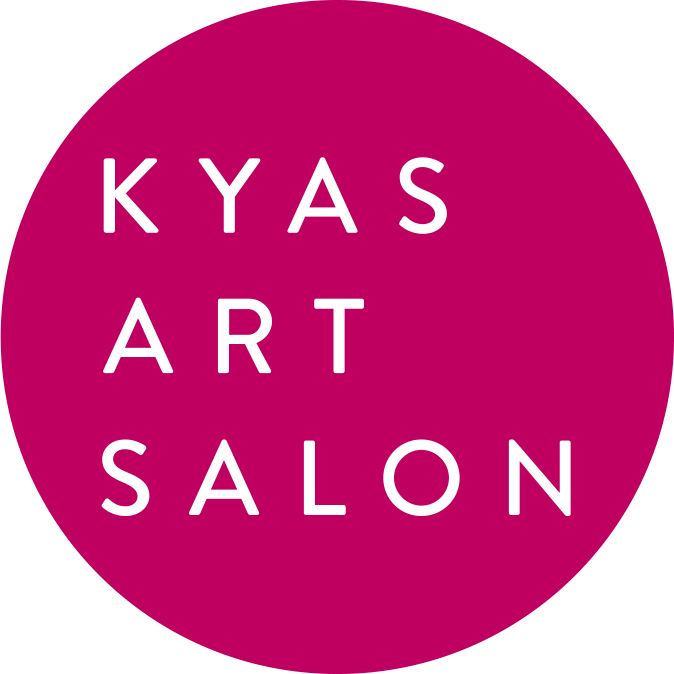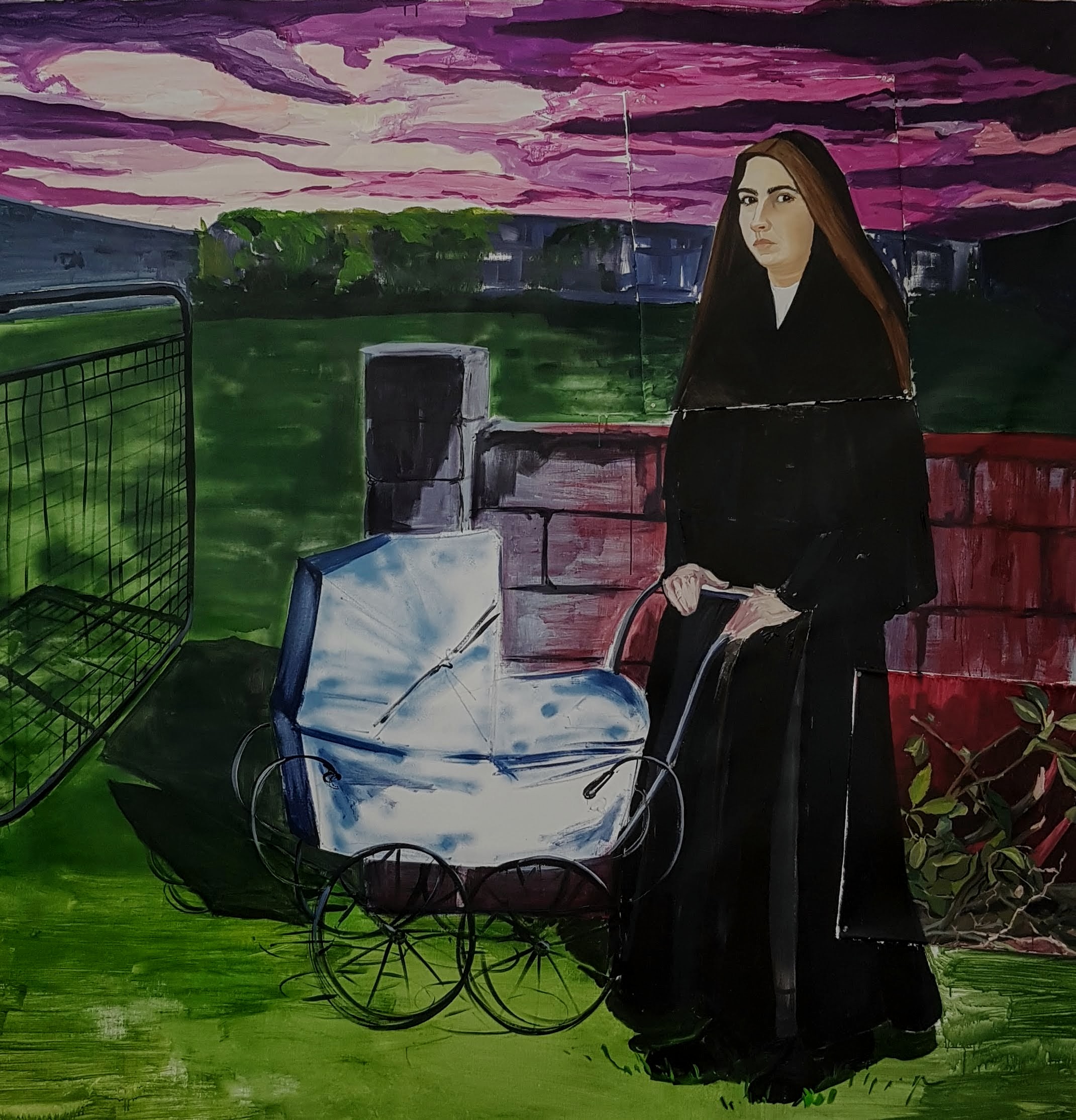Inbar Hasson
Inbar Hasson (1973,Israel) is a multidisciplinary artist living in the Netherlands. After training in Interior Design at the Technion Institute of Technology, and History and Middle Eastern studies at Tel Aviv University, Hasson has practiced Interior Design in Israel and The Netherlands, alongside painting. In this framework, she established and managed an independent design studio, first in Israel and then in Amsterdam. About eight years ago, she decided to devote herself exclusively to art and graduated from the Wackers Academy of Arts in Amsterdam under the mentorship of Sam Drukker. Her work is characterized by combining techniques such as painting, photography, collage and digital work. Hasson presented her first solo exhibition in Israel in 2018, since then she has participated in several solo shows, group shows and art fairs, In Tel Aviv, Netherlands and New York. Her first solo exhibition in Amsterdam took place at the KYAS Art Salon.
Inbar Hasson
”Planted”
Curator: Ilan Wizgan
Exhibition Opening: 13 September 5pm – 8pm
Opening speech: Ilan Wizgan
Exhibition: 13 September – 31 October
Inbar Hasson's exhibition meets the viewer in a zone of discomfort, a kind of twilight zone between reality and imagination. The exhibition consists mainly of large-scale paintings, along with several small prints, a kind of minor echoes of the large works, which constitute additional variations to the subjects in the paintings. The large works, which are the heart of the exhibition, are made in mixed media that use mainly oil painting, collage and acrylic, in large gestures in which the artist activates her entire body. The inspiration for these images comes from various sources: everyday materials, personal experiences, and actual issues. Hasson is looking for images that interest her visually while at the same time contain potential for stories. Sometimes the starting point is a story in which the artist fits images, in other times existing and different images create a new story.
The common denominator of this body of work is the artist's choice to reuse old paintings - portraits and still-lifes - some of them even exercises from the time of her studies, around which she develops a plot that has nothing to do with the creation of the early painting. The portraits are of real people that the artist painted from observation but the whole scene is invented, fabricated. The characters are inserted into a story that is not theirs, moving between different possibilities of reality. Moreover, the same portraits are duplicated in works with a printed background and oscillate between different works, each time connected to another situation. The way in which the ready-made portrait receives its new ‘body’ dictates a separate scene that brings the viewer to another story: The figure of a teacher or educating mother transforms into the image of a woman in a psychiatric hospital, a nun rolls into scenes with erotic tension, and the artist herself, with and without a mask, changes roles ranging from positions of strength to positions of weakness.
Hasson creates situations that seem to merge together the ‘real’ world with the ‘virtual’ world, which exists in the social networks, and allows for posing and inventing alternative narratives and identities. At the same time, social and political issues arise that raise questions, but do not offer answers. The status of women and their place in society is one of the subjects that preoccupy the artist; it is reflected in a series of works with a photographed background of a psychiatric hospital in which women diagnosed as ‘hysterical’ were hospitalized. In an act that combines criticism of the conservative and discriminatory society that has been ruled too long by men, and empathy with the victims of this social order, the artist plants her portrait in the figures of the women patients and places herself in the hospital rooms.
The connection of different elements, which do not naturally fit into one another naturally and routinely, gives rise to paintings that contain much of the secret and the riddle, and often a sense of being strangely familiar and threatening, in the sense of Freud's Unheimlich concept, making it difficult to interpret the situation as good or bad, pleasing or displeasing, as Lacan explained. The situations we apparently recognize seem to be disturbingly alienated. We are exposed to situations we are not accustomed to; we know of their existence, but they usually occur behind a screen or in a backroom, and our knowledge of their nature is second- or third-hand knowledge. We identify them with the dark realm, between the allowed and the forbidden, the normative and the non-normative.
Perhaps because the artist has been living for many years outside of Israel, in America and Europe, the background of the paintings - or the set, as the paintings have a theatrical appearance - seems usually as foreign. The interior design: the velvet furniture, the wooden floor, the heavy curtains - all hint at other places, or the interpretation of the place changes according to the eyes of the beholder. In one painting, for example, a strong woman holds a stick in her hand, and next to her sits a young woman with a book in her lap. An Israeli eye will identify the books on the shelves as religious books (solid binding colors and gold decorations), and accordingly the situation will be identified as an act of education or punishment for deviation from the norms in a religious society. A more universal view might place the scene in a conservative European home a hundred years ago or more. Either way, the situation is difficult and filled with tension, and the figures represent opposite positions of power, as happens quite a bit in the body of works presented here.
In another painting, around the seemingly portrait of a nun, an outside environment is set, in which a Christian nun holds a baby carriage. The familiar image of Jesus and his mother Mary in a sealed garden comes to mind, but it immediately changes in a present-day situation, albeit one that is not possible, since nuns are not allowed to have children. The embarrassment is heightened when we recognize the character, seen in other paintings where she seems to be disguised or participates in games of a sexual nature. In this painting, like in some others in the exhibition, it seems that Inbar Hasson is deceiving us, holding us in a strange spell that leads us through changing emotional states, allowing us not only to contemplate the paintings on show, but also to look inside our souls.
[text by: Ilan Wizgan]
Ilan Wizgan
Ilan Wizgan is an independent curator based in Israel and active also in the international art scene. Before curating the Israeli pavilion in the 2011 Venice Biennial (with Jean de Loisy, director of Palais de Tokyo in Paris), Wizgan occupied several posts in major Israeli art institutions such as the Israel Museum in Jerusalem, the Museum of Israeli Art in Ramat Gan, and the Art Focus Biennial in Jerusalem. He has founded and was the artistic director of the First Biennial of Works on Paper in Jerusalem (2002), has curated thematic exhibitions such as Urban Tales in Tel Aviv, video installations in open spaces (2006), The Cypriot Case at the gallery and artists residence in Herzliya (2005), In the Name of the Place at the Artists’ House in Jerusalem (1998), and has commissioned several exhibitions in the biennials of Venice, Sao Paulo and Istanbul. To this day Wizgan has curated a few dozens of group and solo exhibitions in Israel, the USA, Italy, the Ukraine and the Netherlands. He is serving routinely on several art juries and committees, as well as guest lecturer and critic in art academies in Israel.


